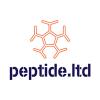I've been testing intranasal IGF-2 on and off for the past few weeks and it's very intriguing. As far as I know, I'm the first human to try this (though I'm sure someone else has done it before) and there are no human studies so it's a total shot in the dark in terms of human dosing and effects.
I haven't measured anything (since it's just an initial test run) but subjectively I seem to be remembering quite a bit (IGF2 significantly increases learning and memory in rodent models) and my dreams have been crazy detailed. This makes sense since IGF-2 increases acetylcholine activity in models.
I also started testing it because there are hints that IGF2 might mediate some of the effects of the (somewhat controversial) efficient sleeper gene (DEC2) which allows some humans to only require 4 to 6 hours of sleep per night in order to function optimally. See study on DEC2 below.
Here's a popular article discussing the efficient sleeper gene: http://www.theblaze....ith-less-sleep/
Anyway, any effects are VERY speculative based on a paucity of human data. Here are some studies if anyone wants to check them out. =)
https://www.ncbi.nlm...pubmed/19679812
Science. 2009 Aug 14;325(5942):866-70. doi: 10.1126/science.1174443.
The transcriptional repressor DEC2 regulates sleep length in mammals.
Abstract
Sleep deprivation can impair human health and performance. Habitual total sleep time and homeostatic sleep response to sleep deprivation are quantitative traits in humans. Genetic loci for these traits have been identified in model organisms, but none of these potential animal models have a corresponding human genotype and phenotype. We have identified a mutation in a transcriptional repressor (hDEC2-P385R) that is associated with a human short sleep phenotype. Activity profiles and sleep recordings of transgenic mice carrying this mutation showed increased vigilance time and less sleep time than control mice in a zeitgeber time- and sleep deprivation-dependent manner. These mice represent a model of human sleep homeostasis that provides an opportunity to probe the effect of sleep on human physical and mental health.
http://www.sciencedi...197458016300331
Insulin-like growth factor 2 rescues aging-related memory loss in rats
Adam B. Steinmetz1, Sarah A. Johnson1, Dylan E. Iannitelli, Gabriella Pollonini, Cristina M. Alberini,
Abstract
Aging is accompanied by declines in memory performance, and particularly affects memories that rely on hippocampal-cortical systems, such as episodic and explicit. With aged populations significantly increasing, the need for preventing or rescuing memory deficits is pressing. However, effective treatments are lacking. Here, we show that the level of the mature form of insulin-like growth factor 2 (IGF-2), a peptide regulated in the hippocampus by learning, required for memory consolidation and a promoter of memory enhancement in young adult rodents, is significantly reduced in hippocampal synapses of aged rats. By contrast, the hippocampal level of the immature form proIGF-2 is increased, suggesting an aging-related deficit in IGF-2 processing. In agreement, aged compared to young adult rats are deficient in the activity of proprotein convertase 2, an enzyme that likely mediates IGF-2 posttranslational processing. Hippocampal administration of the recombinant, mature form of IGF-2 rescues hippocampal-dependent memory deficits and working memory impairment in aged rats. Thus, IGF-2 may represent a novel therapeutic avenue for preventing or reversing aging-related cognitive impairments.
https://www.ncbi.nlm...pubmed/25100745
EMBO Mol Med. 2014 Oct;6(10):1246-62. doi: 10.15252/emmm.201404228.
Insulin-like growth factor 2 reverses memory and synaptic deficits in APP transgenic mice.
Abstract
Insulin-like growth factor 2 (IGF2) was recently found to play a critical role in memory consolidation in rats and mice, and hippocampal or systemic administration of recombinant IGF2 enhances memory. Here, using a gene therapy-based approach with adeno-associated virus (AAV), we show that IGF2 overexpression in the hippocampus of aged wild-type mice enhances memory and promotes dendritic spine formation. Furthermore, we report that IGF2 expression decreases in the hippocampus of patients with Alzheimer's disease, and this leads us to hypothesize that increased IGF2 levels may be beneficial for treating the disease. Thus, we used the AAV system to deliver IGF2 or IGF1 into the hippocampus of the APP mouse model Tg2576 and demonstrate that IGF2 and insulin-like growth factor 1 (IGF1) rescue behavioural deficits, promote dendritic spine formation and restore normal hippocampal excitatory synaptic transmission. The brains of Tg2576 mice that overexpress IGF2 but not IGF1 also show a significant reduction in amyloid levels. This reduction probably occurs through an interaction with the IGF2 receptor (IGF2R). Hence, IGF2 and, to a lesser extent, IGF1 may be effective treatments for Alzheimer's disease.
https://www.ncbi.nlm...pubmed/26168901
Brain Res. 2015 Oct 5;1622:466-73. doi: 10.1016/j.brainres.2015.07.002. Epub 2015 Jul 10.
Exogenous insulin-like growth factor 2 administration enhances memory consolidation and persistence in a time-dependent manner.
Abstract
Memory consolidation is an important process for the formation of long-term memory. We have previously reported that mature brain-derived neurotrophic factor enhances memory consolidation within 9h after initial learning. Recent studies suggest that insulin-like growth factor 2 (IGF2) significantly enhances memory consolidation and prevents forgetting. Thus, we hypothesized that IGF2 exerts its activity on cognitive performance in a time-dependent manner as observed in our previous study. In the one-trial step-through inhibitory avoidance task, we demonstrate that a bilateral injection of IGF2 into the dorsal hippocampus 6 or 9 h after training significantly enhanced the step-through latencies compared with the vehicle-treated controls in the retention trial, which was conducted 24 h after the acquisition trial. However, 12h post-training, IGF2 injection did not increase the step-through latencies. Intriguingly, in the retention trial at 21 days after the training, hippocampal IGF2 injection 6, 9 or 12 h after the acquisition trial significantly increased the step-through latencies compared with the vehicle-treated controls. IGF2 administration at 9 h and 12 h after the acquisition trial significantly increased discrimination index and exploration time on the novel-located object in the test trial at 24 h and 21 days, respectively, after the acquisition trial in the novel location recognition task. In addition, IGF2-induced an increase in the step-through latencies in the retention trial 24 h or 21 days, respectively, after the initial learning was completely abolished by co-injected anti-IGF2 receptor antibody. These results suggest that IGF2 enhances memory consolidation within 9h after initial learning, and increased IGF2 within the 12 h after the acquisition trial, which represents a delayed consolidation phase, is also critical for memory persistence.
https://www.ncbi.nlm...pubmed/26100875
Enhanced memory consolidation in mice lacking the circadian modulators Sharp1 and -2 caused by elevated Igf2 signaling in the cortex.
Abstract
The bHLH transcription factors SHARP1 and SHARP2 are partially redundant modulators of the circadian system. SHARP1/DEC2 has been shown to control sleep length in humans and sleep architecture is also altered in double mutant mice (S1/2(-/-)). Because of the importance of sleep for memory consolidation, we investigated the role of SHARP1 and SHARP2 in cognitive processing. S1/2(-/-) mice show enhanced cortex (Cx)-dependent remote fear memory formation as well as improved reversal learning, but do not display alterations in hippocampus (Hi)-dependent recent fear memory formation. SHARP1 and SHARP2 single null mutants do not display any cognitive phenotype supporting functional redundancy of both factors. Molecular and biochemical analyses revealed elevated insulin-related growth factor 2 (IGF2) signaling and increased phosphorylation of MAPK and S6 in the Cx but not the Hi of S1/2(-/-) mice. No changes were detected in single mutants. Moreover, adeno-associated virus type 2-mediated IGF2 overexpression in the anterior cingulate cortex enhanced remote fear memory formation and the analysis of forebrain-specific double null mutants of the Insulin and IGF1 receptors revealed their essential function for memory formation. Impaired fear memory formation in aged S1/2(-/-) mice indicates that elevated IGF2 signaling in the long term, however, has a negative impact on cognitive processing. In summary, we conclude that the bHLH transcription factors SHARP1 and SHARP2 are involved in cognitive processing by controlling Igf2 expression and associated signaling cascades. Our analyses provide evidence that the control of sleep and memory consolidation may share common molecular mechanisms.
https://www.ncbi.nlm...pubmed/24778346
Rev Neurosci. 2014;25(4):559-74. doi: 10.1515/revneuro-2014-0010.
Emerging evidence of insulin-like growth factor 2 as a memory enhancer: a unique animal model of cognitive dysfunction with impaired adult neurogenesis.
Abstract
In the current aging society, cognitive dysfunction is one of the most serious issues that should be urgently resolved. It also affects a wide range of age groups harboring neurological and psychiatric disorders, such as Alzheimer's disease and schizophrenia. Although the molecular mechanism of memory impairment still remains to be determined, neuronal loss and dysfunction has been revealed to mainly attribute to its pathology. The discovery of neural stem cells in the adult brain that are proliferating and able to generate functional neurons has given rise to the idea that neuronal loss could be rescued by manipulating endogenous neural progenitor and stem cells. To this end, we must characterize them in detail and their developmental programming must be better understood. A growing body of evidence has indicated that insulin-like peptides are involved in learning and memory and maintenance of neural progenitor and stem cells, and clinical trials of insulin as a memory enhancer have begun. In contrast to the expectation of insulin and IGF1, the roles of IGF2 in cognitive ability have been poorly understood. However, recent evidence demonstrated in rodents suggests that IGF2 may play a pivotal role in adult neurogenesis and cognitive function. Here, we would like to review the rapidly growing world of IGF2 in cognitive neuroscience and introduce the evidence that its deficit is indeed involved in the impairment of the hippocampal neurogenesis and cognitive dysfunction in the model mouse of 22q11.2 deletion syndrome, which deletes Dgcr8, a critical gene for microRNA processing.
https://www.ncbi.nlm...pubmed/24732467
PLoS One. 2014 Apr 14;9(4):e94287. doi: 10.1371/journal.pone.0094287. eCollection 2014.
IGF2 ameliorates amyloidosis, increases cholinergic marker expression and raises BMP9 and neurotrophin levels in the hippocampus of the APPswePS1dE9 Alzheimer's disease model mice.
Abstract
The development of an effective therapy for Alzheimer's disease (AD) is a major challenge to biomedical sciences. Because much of early AD pathophysiology includes hippocampal abnormalities, a viable treatment strategy might be to use trophic factors that support hippocampal integrity and function. IGF2 is an attractive candidate as it acts in the hippocampus to enhance memory consolidation, stimulate adult neurogenesis and upregulate cholinergic marker expression and acetylcholine (ACh) release. We performed a seven-day intracerebroventricular infusion of IGF2 in transgenic APPswe.PS1dE9 AD model mice that express green fluorescent protein in cholinergic neurons (APP.PS1/CHGFP) and in wild type WT/CHGFP littermates at 6 months of age representing early AD-like disease. IGF2 reduced the number of hippocampal Aβ40- and Aβ42-positive amyloid plaques in APP.PS1/CHGFP mice. Moreover, IGF2 increased hippocampal protein levels of the ACh-synthesizing enzyme, choline acetyltransferase in both WT/CHGFP and APP.PS1/CHGFP mice. The latter effect was likely mediated by increased protein expression of the cholinergic differentiating factor, BMP9, observed in IGF2-treated mice as compared to controls. IGF2 also increased the protein levels of hippocampal NGF, BDNF, NT3 and IGF1 and of doublecortin, a marker of neurogenesis. These data show that IGF2 administration is effective in reversing and preventing several pathophysiologic processes associated with AD and suggest that IGF2 may constitute a therapeutic target for AD.
https://www.ncbi.nlm...pubmed/22514330
J Neurosci. 2012 Apr 18;32(16):5688-703. doi: 10.1523/JNEUROSCI.0111-12.2012.
IκB kinase/nuclear factor κB-dependent insulin-like growth factor 2 (Igf2) expression regulates synapse formation and spine maturation via Igf2 receptor signaling.
Schmeisser MJ1,
Baumann B,
Johannsen S,
Vindedal GF,
Jensen V,
Hvalby ØC,
Sprengel R,
Seither J,
Maqbool A,
Magnutzki A,
Lattke M,
Oswald F,
Boeckers TM,
Wirth T.
Abstract
Alterations of learning and memory in mice with deregulated neuron-specific nuclear factor κB (NF-κB) activity support the idea that plastic changes of synaptic contacts may depend at least in part on IκB kinase (IKK)/NF-κB-related synapse-to-nucleus signaling. There is, however, little information on the molecular requirements and mechanisms regulating this IKK/NF-κB-dependent synapse development and remodeling. Here, we report that the NF-κB inducing IKK kinase complex is localized at the postsynaptic density (PSD) and activated under basal conditions in the adult mouse brain. Using different models of conditional genetic inactivation of IKK2 function in mouse principal neurons, we show that IKK/NF-κB signaling is critically involved in synapse formation and spine maturation in the adult brain. IKK/NF-κB blockade in the forebrain of mutant animals is associated with reduced levels of mature spines and postsynaptic proteins PSD95, SAP97, GluA1, AMPAR-mediated basal synaptic transmission and a spatial learning impairment. Synaptic deficits can be restored in adult animals within 1 week by IKK/NF-κB reactivation, indicating a highly dynamic IKK/NF-κB-dependent regulation process. We further identified the insulin-like growth factor 2 gene (Igf2) as a novel IKK/NF-κB target. Exogenous Igf2 was able to restore synapse density and promoted spine maturation in IKK/NF-κB signaling-deficient neurons within 24 h. This process depends on Igf2/Igf2R-mediated MEK/ERK activation. Our findings illustrate a fundamental role of IKK/NF-κB-Igf2-Igf2R signaling in synapse formation and maturation in adult mice, thus providing an intriguing link between the molecular actions of IKK/NF-κB in neurons and the memory enhancement factor Igf2.
Edited by lostfalco, 18 March 2017 - 03:06 AM.




























































